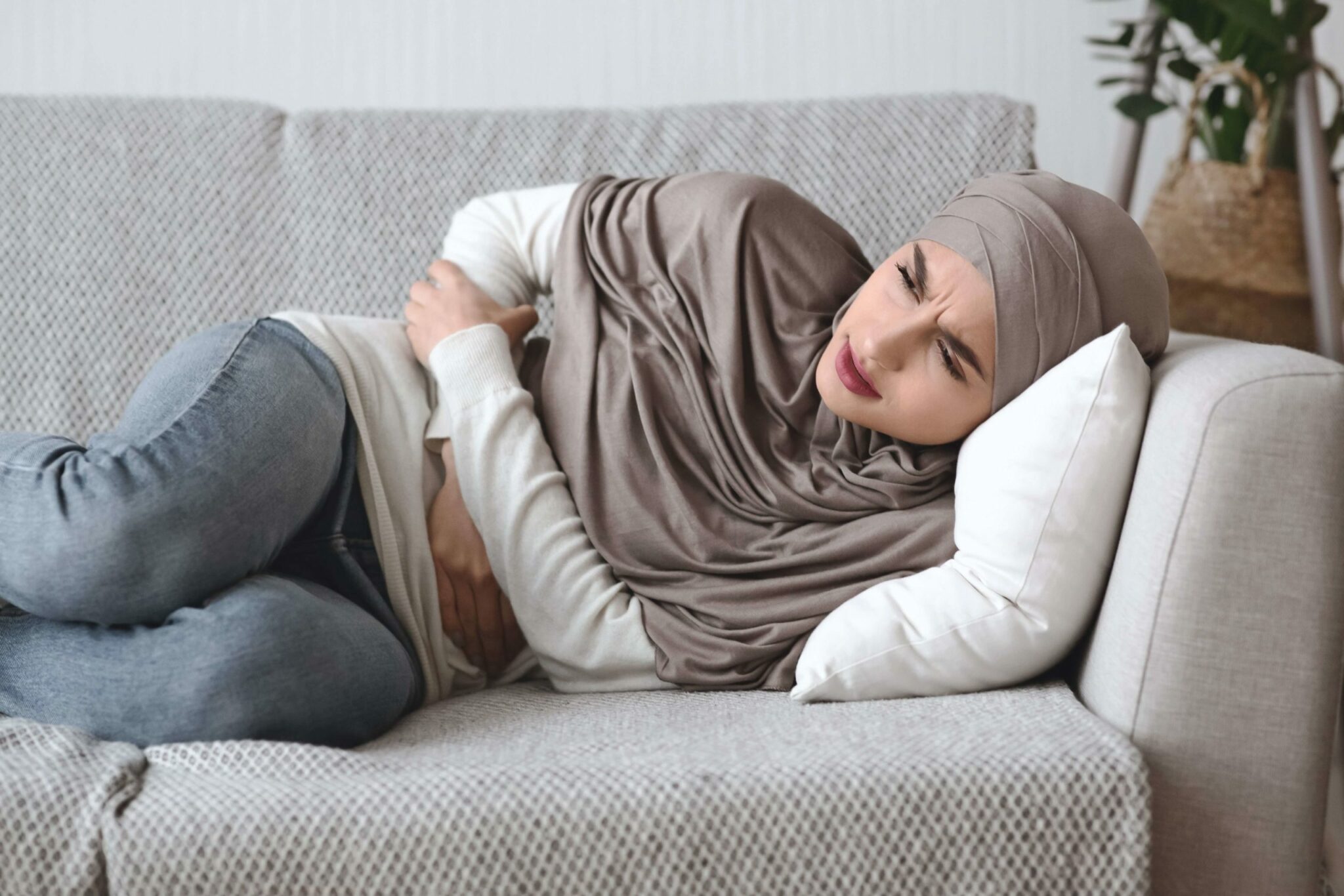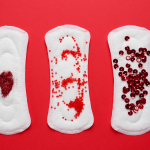
Key facts
- Period pain is common and is usually not caused by another health problem.
- Sometimes, an underlying health problem may be causing the pain. It’s important to see your doctor if you experience any change in your period pain or bleeding pattern.
- Relaxation, gentle exercise and heat packs can help relieve period pain.
- Speak to your doctor or pharmacist for advice on medicines that may relieve your period pain.

Painful periods (dysmenorrhoea)
How does period pain feel?
There is a wide range of how period pain feels and how severe it is.
Period pain (dysmenorrhoea) is usually felt in the lower abdomen. Sometimes this pain spreads towards the upper abdomen, back and thighs. It may feel like cramps, heaviness or a constant, dull pain.
Some people also experience nausea, diarrhoea or symptoms of premenstrual syndrome (PMS).
Many people will experience some form of pain during their period. It is more common if you are young, but can also affect you as you get older.
What causes period pain?
Period pain is also known as dysmenorrhoea. There are 2 types of period pain: primary dysmenorrhoea and secondary dysmenorrhoea.
Primary dysmenorrhoea
This is the more common type of period pain. It starts in the first few years of getting your period and is not caused by any underlying problem in the uterus (womb).
The pain is caused by contractions (tightenings) of the muscle of the uterus, which help the uterus shed its lining during a period. Natural substances produced by the body (called prostaglandins) make the muscle of the uterus contract.
People who experience period pain may have high levels of prostaglandins, making the contractions stronger. It’s not known why some females have high levels of prostaglandins.
If you have primary dysmenorrhoea, the pain usually starts at the beginning of your period or the day before your period begins. It often lasts between 1 to 3 days and is most painful on the first or second day of your period.
Secondary dysmenorrhoea
This type of period pain is caused by an underlying medical condition that affects the uterus. Conditions that can cause painful periods include endometriosis, fibroids, pelvic inflammatory disease and adenomyosis.
If you have noticed a change in your period pain (for example, if it feels more painful, or if it lasts longer than normal), or if you start to get period pain when you haven’t had it in the past, it’s important to see your doctor to check whether you may have a condition causing secondary dysmenorrhoea.
What can I do to relieve period pain?
You can help reduce period pain by trying the following:
- gentle exercise
- relaxation and meditation to reduce stress
- use a heat pack or hot water bottle
- have a warm bath or shower
- try acupuncture — see a qualified acupuncturist
- consider dietary supplements — see your doctor or dietitian
Over-the-counter (OTC) medicines can sometime help provide relief from period pain.
Paracetamol
Paracetamol may help relieve mild period pain – always follow the dosing directions on the pack.
Anti-inflammatory medicines
Anti-inflammatory medicines can relieve period pain by preventing the body from making prostaglandins. Some examples are ibuprofen, naproxen or mefenamic acid. These medicines are not appropriate for some people. Ask your doctor or pharmacist if they are safe for you.
Stronger pain medicines require a prescription from your doctor.
Are there any other treatments available?
If you can’t relieve your pain with lifestyle measures and OTC pain medicines, your doctor can check for underlying conditions that may be causing your period pain.
The oral contraceptive pill (OCP, or ‘the pill’) can sometimes be effective in reducing period pain. There are many different types of OCPs, and your doctor can help you choose the right one for your circumstance. The OCP can also be used to skip periods, so that you experience pain less often. Ask your doctor to guide you on how to have fewer periods using the OCP.
A hormonal intrauterine device (IUD) can relieve period pain — ask your doctor if this option is suitable for you. The IUD is inserted into the uterus and remains there for up to 5 years. There are 2 types of hormonal IUDs available in Australia: Mirena and Kyleena, speak to your doctor about suitable options for you. If you have a hormonal IUD inserted you may feel cramps in the first few months, but this usually goes away. Hormonal IUDs are not recommended if you are planning a pregnancy.
When should I see a doctor?
If your period pain is so severe that it affects your daily activities or causes you to stay home from work or school, you should see a doctor to discuss treatment options.
It’s especially important to see your doctor if you experience any of the following:
- you start to get period pain when you haven’t had it in the past
- your period pain becomes more severe
- your period pain lasts longer than it used to
- you have pain during sex
- you have pain (similar to period pain) between periods
- you bleed between periods or have irregular periods




